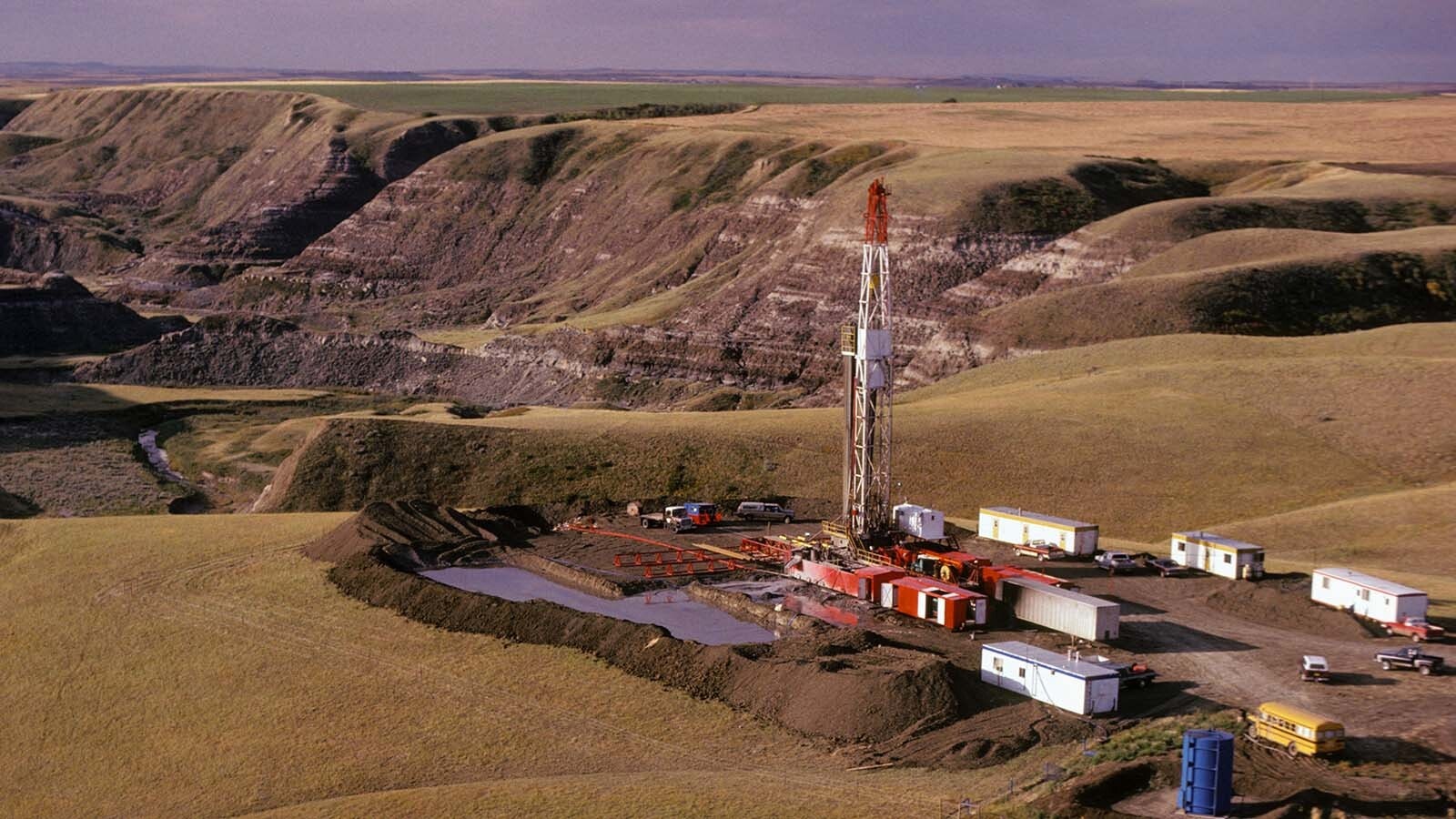By Kevin Killough, energy reporter
Kevin@CowboyStateDaily.com
Proponents of renewable energy promise that wind energy, solar energy, and electric vehicles can supply the world with the energy and transportation it needs without the carbon dioxide emissions that drive global warming.
However, wind and solar farms require enormous amounts of land. Transmission lines cut wide corridors across miles of landscape. And the mining to build batteries, solar panels, and wind turbines will need to be scaled up to a degree unseen in all of the history of human industry.
As all the environmental impacts of the energy transition are realized, will environmentalists oppose the transition they champion?
Imperiled Planet
At Ryolite Ridge in the Silver Peak Range in Nevada, about halfway between Reno and Las Vegas, is a site where Ioneer, an Australian mining company, wants to mine lithium. The location happens to be the only habitat for Tiehm’s buckwheat, which the U.S. Fish and Wildlife Service listed it as an endangered species.
Lithium is needed for electric vehicle batteries and battery storage facilities that will be used to stabilize a grid when the main energy sources are intermittent wind and solar farms. The scale by which lithium will need to be mined is enormous.
According to one 2022 study, global lithium demand will triple by 2030 over 2021 levels. Currently, the U.S. has a single lithium mine operating, which is also in Nevada, and most of the U.S. supply of the mineral comes from South America and China.
In a statement announcing the buckwheat’s listing, the Fish and Wildlife Service said it would also be listing 910 acres of the area as critical habitat “to help conserve the imperiled planet.”
Bernard Rowe, Ioneer managing director, said in a statement that the mining operations would continue while still protecting the Tiehm’s buckwheat population.
“I’m thrilled that the Fish and Wildlife Service has recognized the existential threats to Tiehm’s buckwheat and provided badly needed habitat protections,” said Patrick Donnelly, Great Basin director at the Center for Biological Diversity, in a statement.
The center sued to get the plant listed and it says the company’s mitigation plan to protect the species isn’t good enough.
Always An Impact
While not every mine is being built on critical habitats, they all have heavy environmental impact, and it can take a decade or more to permit a mine on federal land. If they all face environmental opposition for one reason or another, the permitting times will continue to be extensive, which will scare off investment in these operations and make them much more expensive.
Donnelly told Cowboy State Daily that the environmental impacts of open-pit and brine lithium mining are “quite significant.” In an open pit mine, a giant hole is dug and the lithium is refined from the ore removed from the pit. In brine operations, the lithium is extracted from salty groundwater that is evaporated in large ponds.
The one lithium mine in the U.S. is a brine operation.
“They’re evaporating off over 10,000 acre feet of water a year into the air, and that’s a huge amount of water,” Donnelly said.
Donnelly said the Center for Biological Diversity supports the clean energy transition, and they understand that it’s going to require a lot of lithium.
Sweet Spot
So how do we meet that demand in a way that doesn’t impact the environment?
Donnelly said the answer lies in an emerging technology called direct lithium extraction (DLE). The technology wouldn’t require a large pit and it uses lower amounts of water than the conventional brine method.
“The hope is that DLE can be the sweet spot, and that we can find appropriate places to deploy daily technologies where we can produce the lithium we need while minimizing the impact on ecosystems,” Donnelly said.
However, as with any new technology, there’s a long road between tests and commercial-scale operations. According to Seeking Alpha, DLE hasn’t been tested at a large scale over a long period, so its effectiveness hasn’t been determined. It is also technically complex and more expensive than current methods.
If millions of gas-powered cars are going to be replaced with EVs, often through government mandate, making a key mineral in their batteries much more expensive to produce would going to cause a lot of financial hardship for a lot of people.
Costly Litigation
Donnelly said that, since open pit lithium mines and conventional brine operations result in extensive litigation from environmental groups, if DLE is more environmentally friendly, then lithium production would become cheaper as mines would have less legal expenses to get permitted.
“There’s a vicious legal struggle to open every single lithium project…It could be that the more evolving technologies, if put in the right place, are going to be expedient and cheaper because they want to take significant struggles over the environment and cultural resources,” Donnelly said.
Energy expert Brian Gitt said that, for many environmentalists, there’s just a lack of awareness of what the energy transition entails. To meet the transition goals of 2050, Gitt said, we’re going to need to mine as much copper as we mined in the last 5,000 years — 700 million metric tons.
Gitt said conservative estimates are that we will need a grid three times the size of the current grid to have enough wind and solar to satisfy energy demand, and that includes thousands of miles of transmission lines.
“It just puts things in perspective, when you talk about the scale of what is needed to happen. And I don’t think most people understand all that goes into creating that kind of mining infrastructure,” Gitt said.
Tale of Two Crises
Erik Molvar, executive director of the Western Watersheds Project, said the renewable energy transition is an answer to carbon dioxide emissions, but it’s not the only consideration.
“We have two key crises that are currently in play at the same time. We have a climate crisis. And we have a biodiversity crisis,” Molvar explained. “And we have to solve both. So solutions that solve the climate crisis, but make the biodiversity crisis worse are not the kinds of solutions we should be working toward.”
Molvar said that just because an industry is addressing the climate crisis doesn’t mean it should get a free pass on other environmental concerns.
The Sacrifice Zone
Molvar said the key is doing these projects where they cause the least amount of environmental degradation or in areas where there’s already a lot of it.
He did an analysis back in 2009 for the State of Wyoming that identified an area east of Laramie and north to the North Platte River that he calls the “green rectangle.” It’s a sacrifice zone where development would be ideal in terms of environmental impact.
“The key point is that as we work toward a sane solution to energy for the climate, we also have to keep an eye on land and wildlife to make sure we proceed forward in a way that’s environmentally responsible,” Molvar said.
Best You Can
Alan Rogers, communication director for the Wyoming Outdoor Council, said the purpose of the environmental assessments that are part of the permitting process for all projects on federal land are not meant to be a yes or no question about whether or not the project should proceed.
“The intent of those environmental impact statements or environmental assessments is to evaluate what the resources are, what the potential conflicts are, look at the proposal, and then consider a range of alternatives,” Rogers said.
He said in most cases the projects under review in Wyoming that the council have been involved with ultimately proceeded with modifications to address environmental concerns. It’s rare they are stopped entirely.
“It’s a clumsy, bureaucratic process, but it’s also the essential way the American public has a say in the way development is happening,” Rogers said. “We like to say ‘do it right,’ but a more realistic way of framing it would probably be to do it the best you can.”
Internal Tension
Gitt said that the environmental movement has developed a core ethos in which they do try to block development.
“It’s very different from, how do you build for the future? How do you build an energy system? How do you build that kind of progress? And so I think they’re having to deal with this internal conflict,” Gitt said.
He said the overall goal of just stopping development has been very successful through the courts and regulatory process.
“That’s been kind of a key strategy and tactic for environmental organizations for decades,” Gitt said.
Europe is much further along in the energy transition than the U.S., and the resulting energy crisis is shutting down industries, freezing residents, and greatly hurting people’s budget as they try to cover sky-high energy costs.
Gitt said that as the realities of the scale and cost of the energy transition come to bear, people are going to stop placing as high a priority on reducing climate risk and a higher priority on lifting people out of poverty.
“These kinds of grandiose policies are not going to succeed, because when push comes to shove, it’s your quality of life and your kids and your family and your local community. It goes beyond these aspirational or ideological beliefs,” Gitt said.





